Everyone knows that you can only see the Milky Way during the summer – that it’s a ‘summer sight’, right?
Wrong. The Milky Way is still there on these frosty winter nights, it’s just not as dramatic or obvious.
While the summer Milky Way is a naked-eye wonder, a broad trail of starry froth and foam that splits the sky in two, the winter Milky Way is not so obvious and more of a spectacle to seek out.
It’s dappled on the sky, and if you take the time and trouble to look at it you’ll be rewarded with some lovely sights.
For more winter observing, read our guides to winter stars, the best winter constellations, Patrick Moore's top 10 winter sights and 12 Christmas astronomy targets
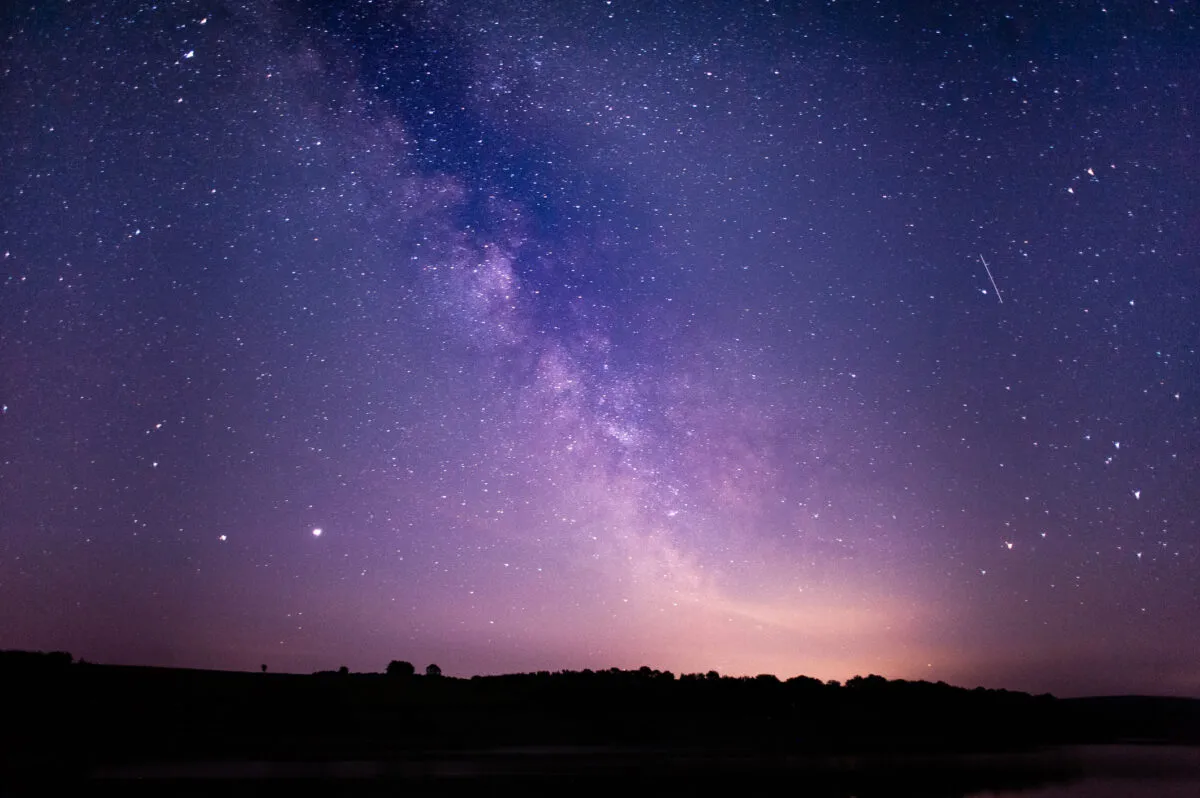
You’ll see another side of the Milky Way; instead of the bright gaseous nebulae of summer, such as the famous Lagoon Nebula and Trifid Nebula, what you will see is a host of sparkling star clusters.
We’re going to go on a tour of the midwinter Milky Way and take in some of these sights. Half are visible to the naked eye, and you’ll need a pair of binoculars or a small telescope to see the rest.
One thing’s for sure, all of the sights are worth tracking down after you’ve taken your obligatory nightly look at the Pleiades and the Orion Nebula.
Wrap up warm
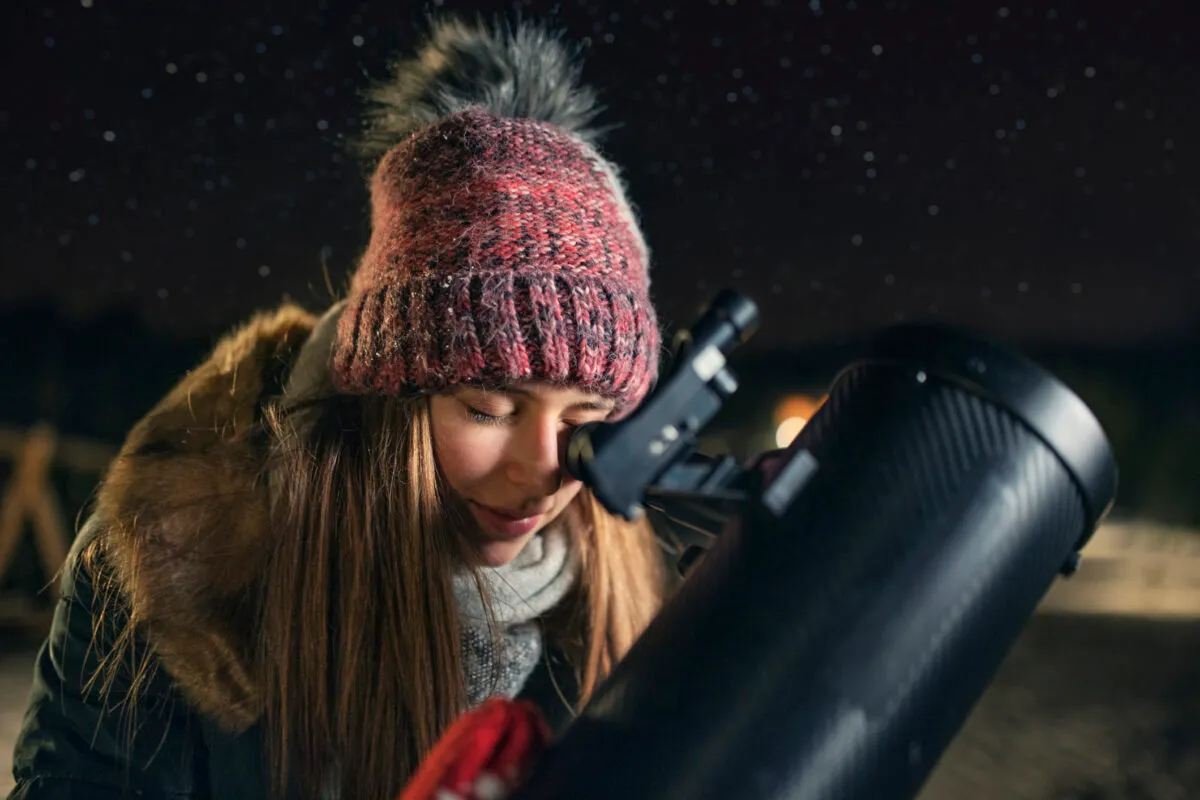
On the next clear, frosty night, before starting the tour pull on several pairs of socks and wrap up in your warmest jacket, hat and gloves.
If you look like a seven-year-old child who has been dressed by their mum for a walk on a cold, snowy day, you’ll be fine.
Head out at around 11:30pm and go to the darkest spot you can find.
Straight away you’ll see the constellation of Orion, the Hunter standing above the southern horizon, looking splendid with his famous belt of three icy blue-white stars pulled tightly around his waist and ruddy-hued Betelgeuse (Alpha (α) Orionis) glowing at his shoulder.
All the objects on this tour lie close to Orion, in the southern part of the sky. Before you begin the tour, let your eyes adapt properly to the darkness; this takes about half an hour. Then let us embark!
Winter Milky Way targets: naked eye

The targets below can all be seen with the naked eye under good conditions, but binoculars will bring out their beauty
1
The Christmas Tree Cluster, NGC 2264
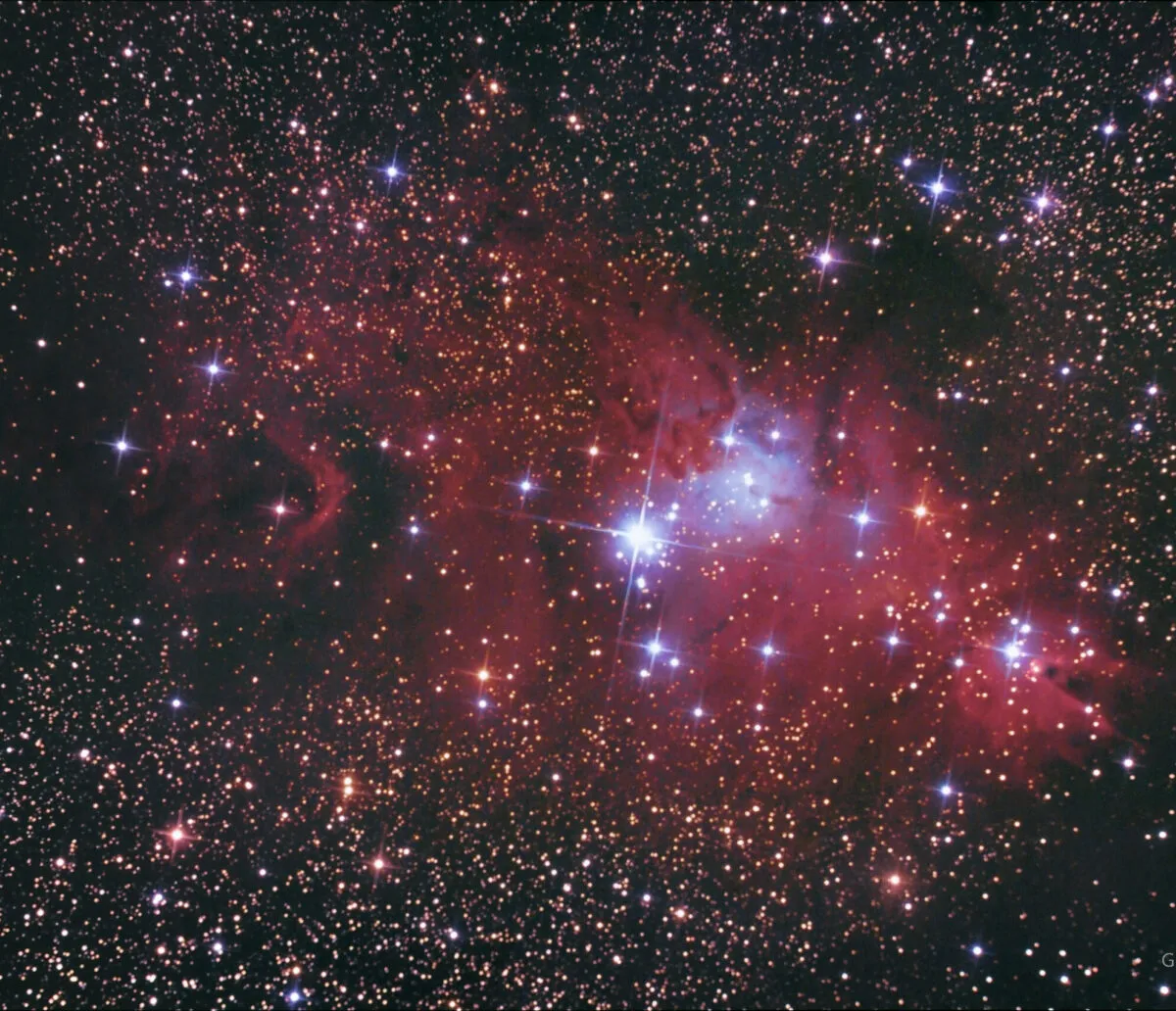
Located a short distance above and left of Betelgeuse (Alpha (α) Orionis), the Christmas Tree Cluster is 2,200 lightyears away and spans about 25 lightyears. At mag. +4.0 it’s easy to see with the naked eye as a small smudge of light.
This open star cluster contains around 80 stars and gets its nickname from the fact that observers think it resembles a Christmas tree when viewed through a telescope. The Cone Nebula is nearby, but is too faint to see without a large telescope.
2
The Shoe-Buckle Cluster, M35
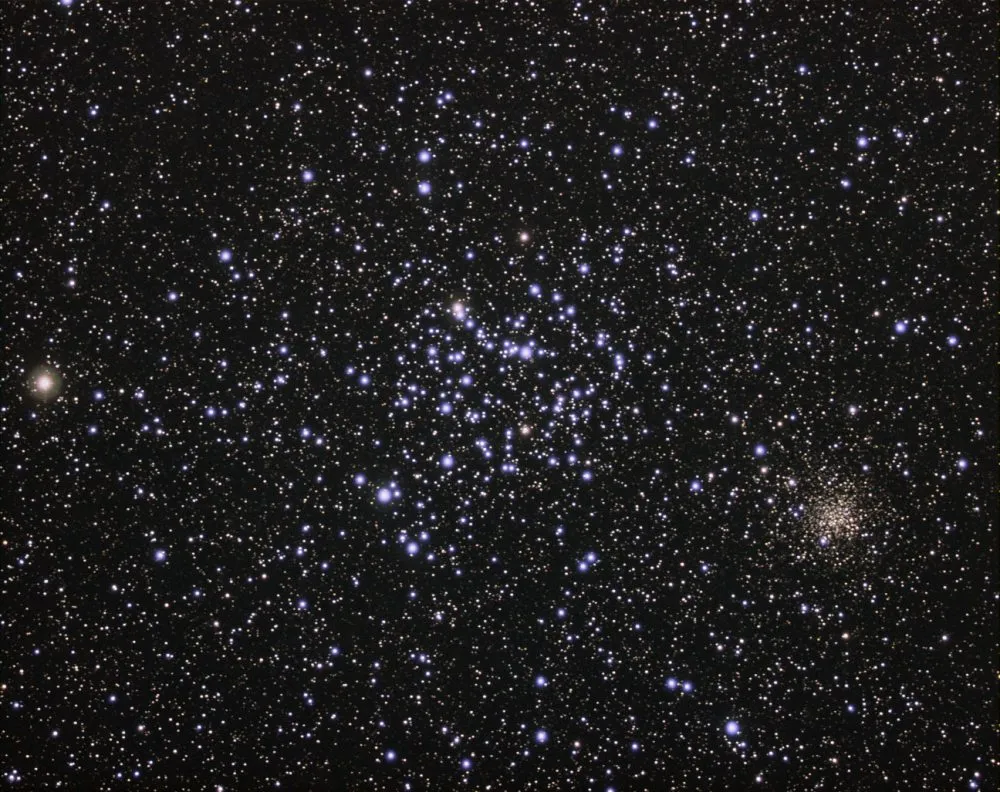
One of the most popular star clusters in the northern sky, M35 can be found high above Orion, close to the foot of one of the Twins of Gemini, which explains its (little-used) nickname. At mag. +5.0, it’s a visually large object and on a clear night is easy to see with the naked eye as a misty patch above Orion.
M35 contains perhaps 500 stars, and the brightest hundred or so are a lovely sight through binoculars and small telescopes, looking like spilled salt grains. The cluster is approximately 35 lightyears across and lies 3,000 lightyears away from us.
3
M47
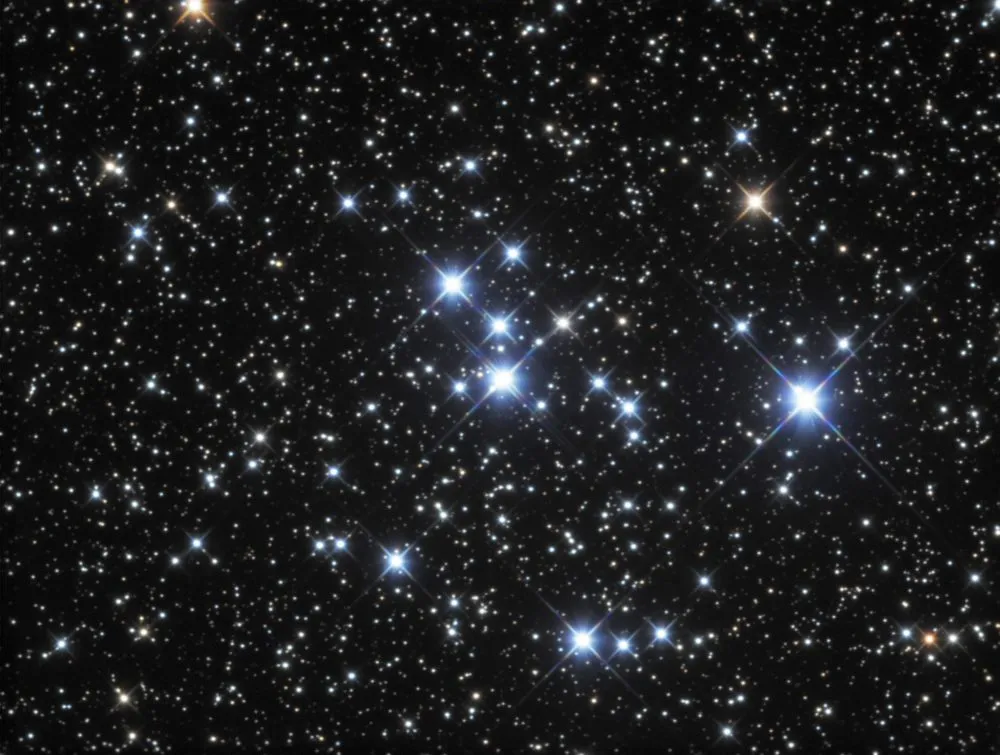
Often overlooked because of the bigger, brighter star clusters around it, M47 is a treat to observe on a frosty night. This loose cluster of around 50 stars can be found to the upper left of Sirius (Alpha (α) Canis Majoris) and covers an area of sky the same size as the Moon.
At mag. +4.4 it is an easy naked-eye object if you take the time to look for it. M47 is 1,600 lightyears away from our Solar System.
4
The Little Beehive Cluster, M41
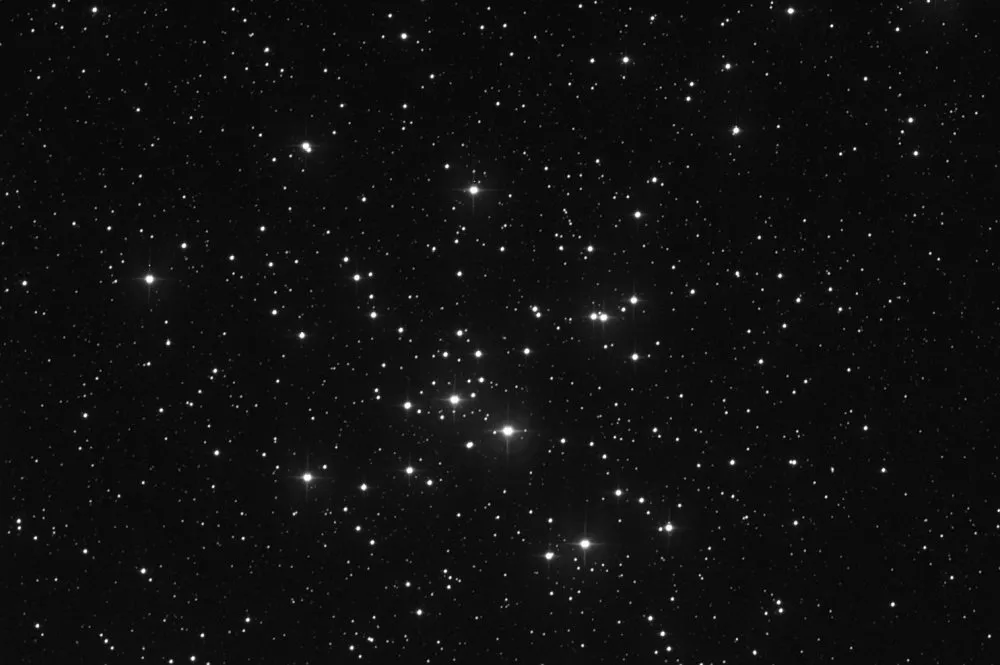
If this bright, mag. +4.5 open star cluster were anywhere else in the northern sky it would be much more famous and popular. But because it lies close to and directly beneath bright Sirius, which never rises high in the sky as seen from mid-latitudes, the Little Beehive Cluster is something of a ‘tree-scraper’ for many winter observers.
If you have a clear, low southern horizon, on mid-winter nights you should be able to find M41 easily and it really is a lovely sight through binoculars and small telescopes, resembling a smaller version of M44, the Beehive Cluster in Cancer. The cluster is a long way away, more than 2,300 lightyears distant, and its 100 or so silvery stars cover an area of the sky as wide as a full Moon.
5
Sirius, the ‘Dog Star’
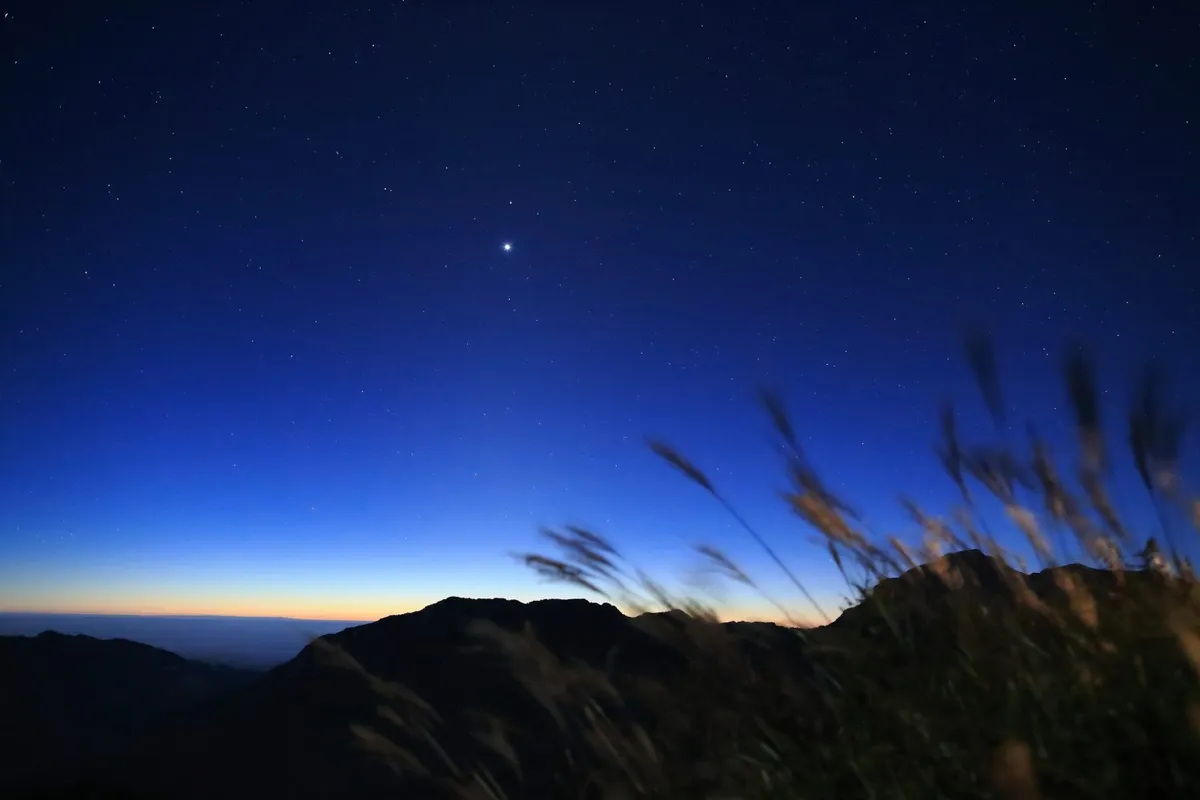
Shining down to the lower left of Orion’s famous Belt, magnificent Sirius blazes away at mag. –1.46, making it the brightest star in the night sky by a significant margin. Because it lies so low in the sky, at mid-latitudes Sirius is often seen through lots of turbulent air that boils above the horizon. As a result, its light gets broken up, causing it to sparkle and flash dramatically, much like a finely cut jewel catching the sunlight. Sitting nine lightyears away from Earth, Sirius – also known as the ‘Dog Star’ – is the fifth closest star to our Sun.
Winter Milky Way targets: binoculars and telescope

Break out your binoculars or a small telescope for the next part of the tour and explore more of the Milky Way’s deep-sky objects
6
The Rosette Nebula
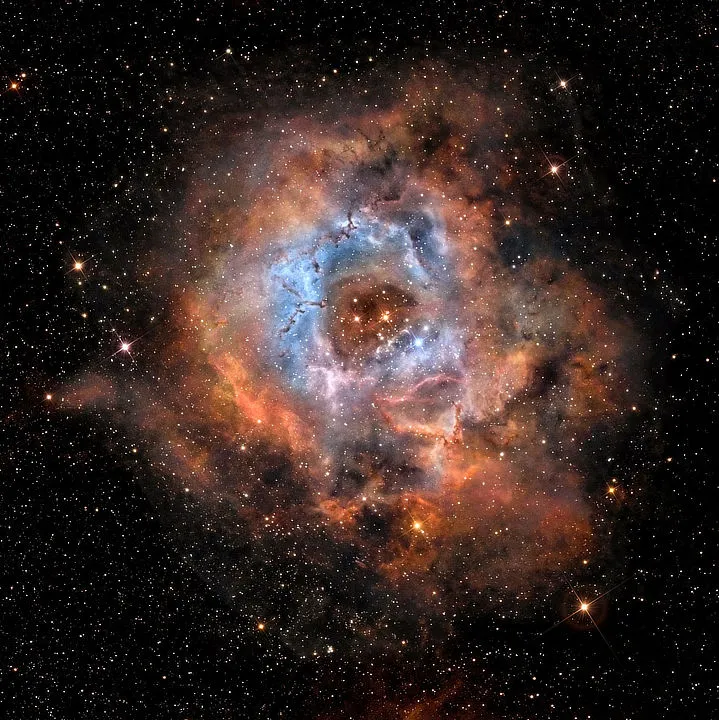
Photographs show the Rosette Nebula as a pretty, rose-like bloom of pink and red gas to the left of Betelgeuse. But despite shining at mag. +5.5, its width and low surface brightness means that with the naked eye, it appears as a vague smudge, even on the darkest of clear nights.
The nebula is best viewed through binoculars or a small telescope, but even then it can look like a ghostly patch. For most amateur photographers it’s probably best enjoyed photographically, on long-exposure images, giving you a good reason, perhaps, to start your journey into astrophotography (see the ‘Photographing the Milky Way’ box below).
7
The Heart-Shaped Cluster, M50
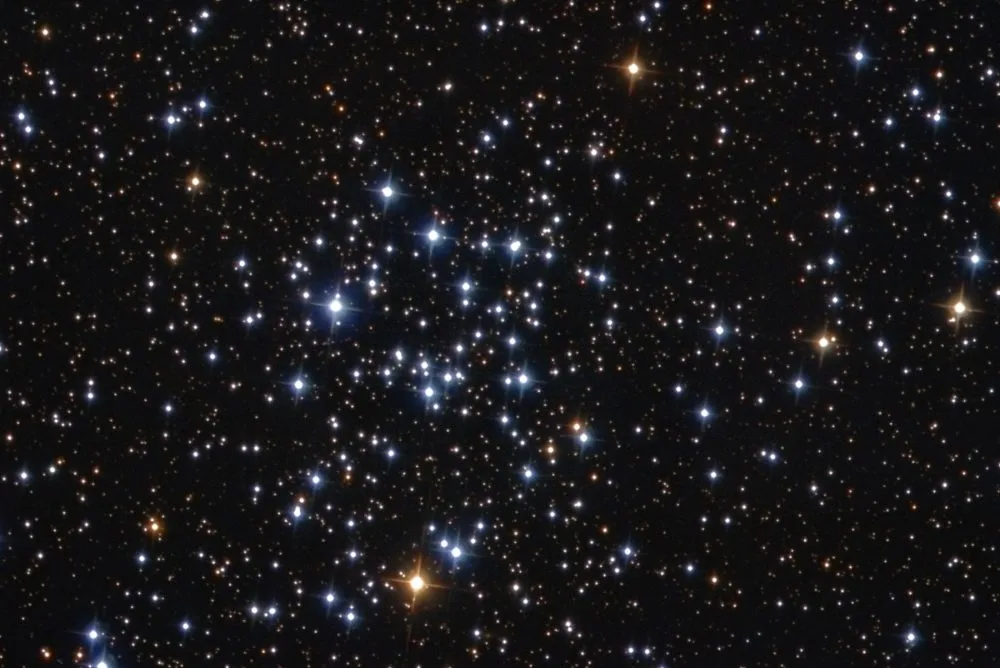
When you look at this 3,200 lightyear-distant, mag. +5.9 open star cluster through your binoculars or telescope you will see a handful of brighter stars surrounded by much fainter ones. But you may be left scratching your head with regard to how the Heart-Shaped Cluster, M50, got its nickname, because it’s never looked anything like a heart to me. Nevertheless, this target is still worth tracking down on a cold winter’s night and you’ll find it glittering serenely above and slightly to the left of Sirius.
8
M46
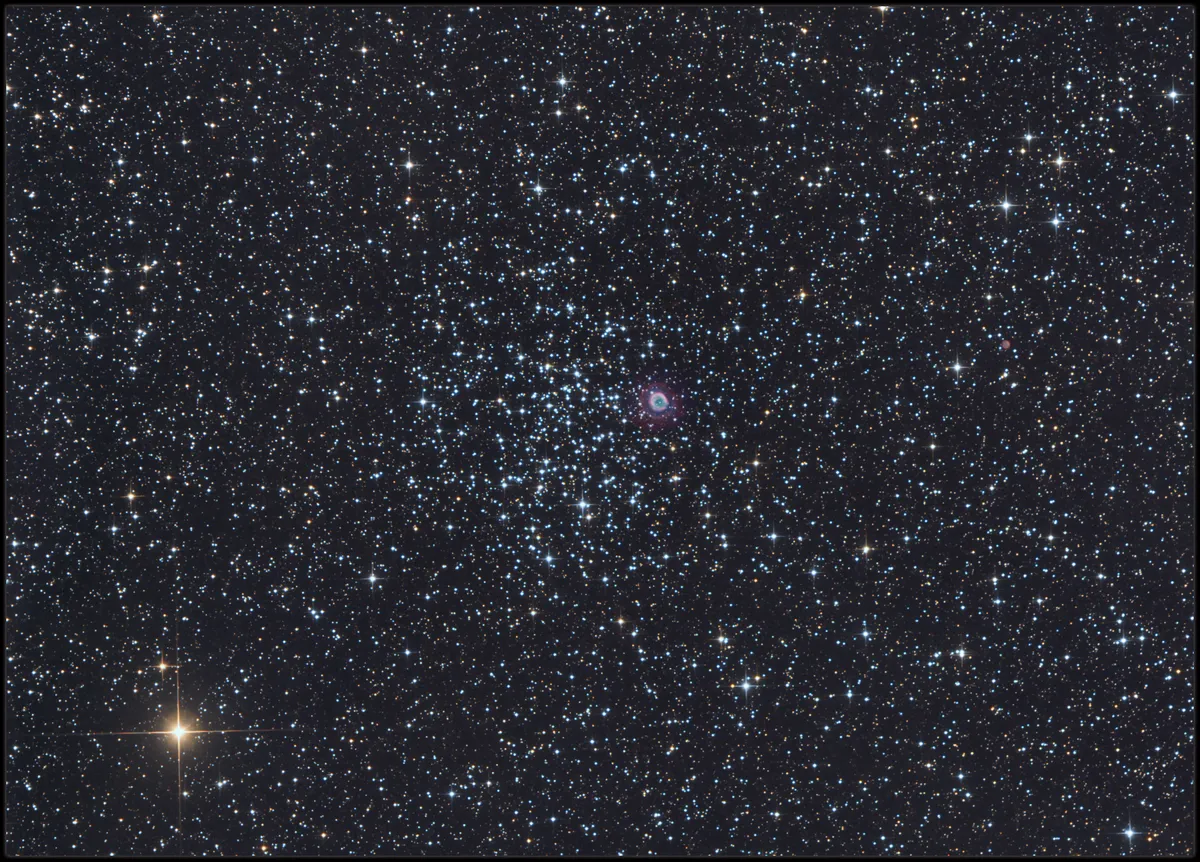
This rich, mag. +6.0 open star cluster can be found a short distance over to the left of Sirius and it contains between 100 and 500 ‘pollen grain’ stars, surrounded by a cage of brighter suns. If you look at M46 through a telescope at high magnification, you might be able to see that a tiny planetary nebula appears to be embedded within it. In fact, this is all a trick of perception, as NGC 2438 is several thousand lightyears closer to us than M46 and isn’t remotely associated with the cluster.
9
Hagrid’s Dragon Cluster, NGC 2301

NGC 2301 has a number of aliases. Besides its New General Catalogue designation, it’s also known as Hagrid’s Dragon Cluster and Copeland’s Golden Worm. But despite boasting these dramatic nicknames, it is likely that few people reading this have even heard of this mag. +6.0 loose, open cluster. This is hardly surprising because NGC 2301’s stars are faint and spread far apart. In fact, through a telescope it looks more like a ragged line of stars than an open cluster.
But with the help of a little imagination, you might just be able to see the shape of a dragon. When you do, perhaps you’ll consider a third nickname for the cluster, Norberta, the name of the dragon that belonged to Rubeus Hagrid in the Harry Potter books. You’ll find the cluster roughly halfway between Orion’s Belt and Procyon (Alpha (α) Canis Minoris), the brightest star in Canis Minor.
10
The Seagull Nebula, IC 2177
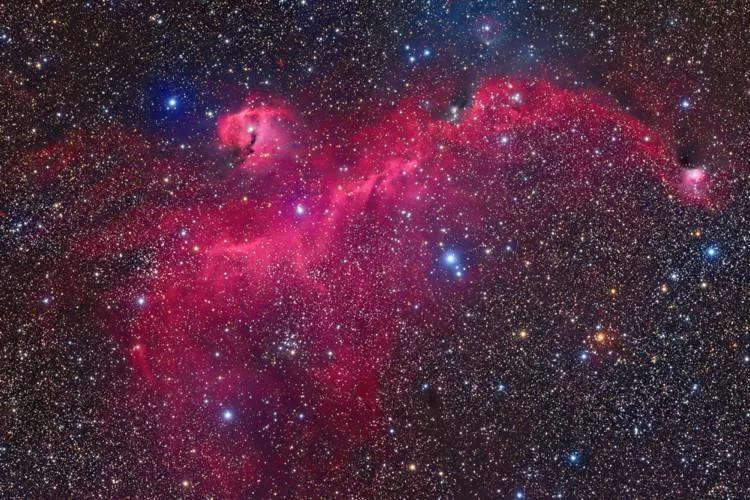
Just a short distance above and to the left of the brilliant star Sirius lies a very faint nebula surrounding an 8th magnitude star. At mag. +10.0, the Seagull Nebula will present you with a real Christmas challenge, because it can only be seen through a telescope on a beautifully clear, Moon-free night from a site that’s free from light pollution.
Even if you do pick it up as a vaguely M-shaped smudge, you’ll probably wonder why IC 2177 is nicknamed after a screeching, chip-stealing seaside bird! But the Seagull’s wings and head do appear quite pronounced in long-exposure photographs.
Photographing the winter Milky Way
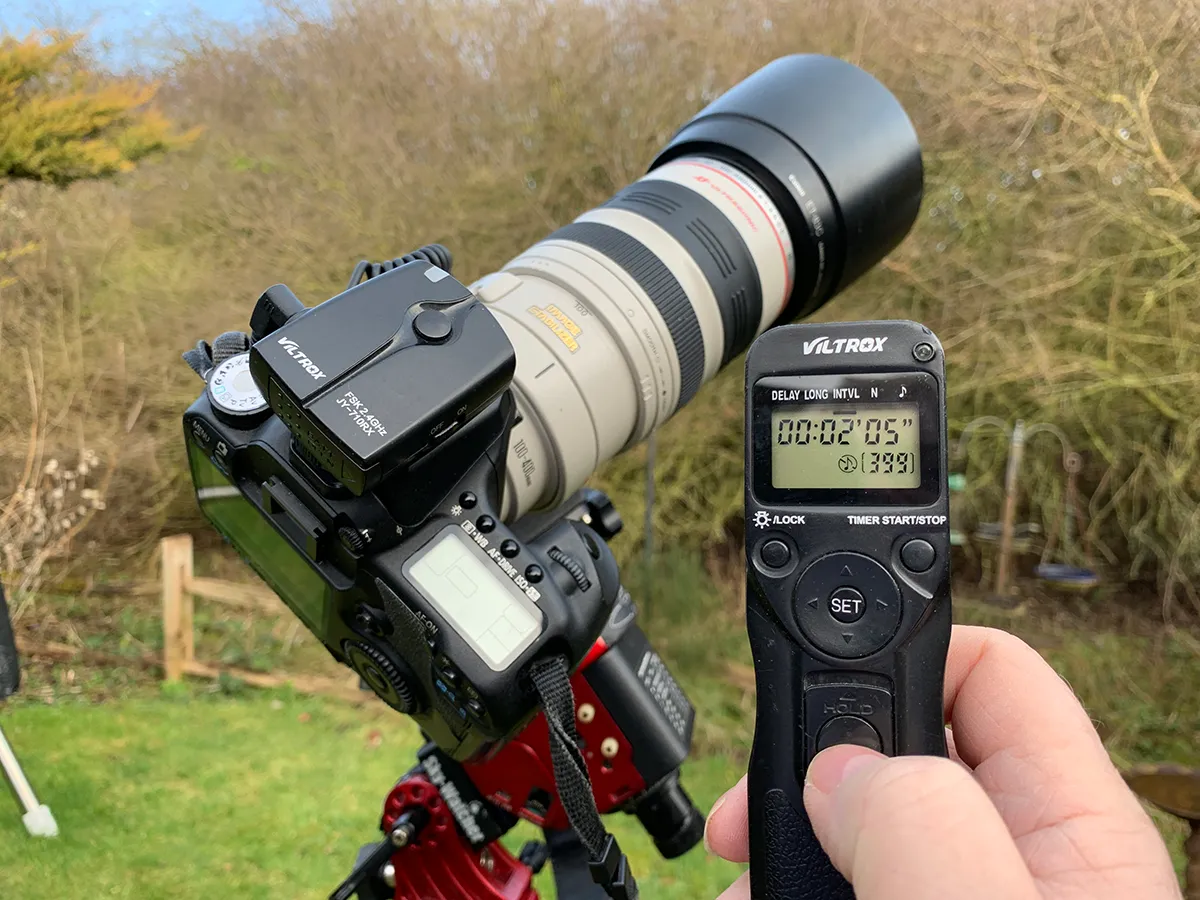
There are so many beautiful images of the bright summer Milky Way out there, some taken with just mobile phones.
If you want to photograph the winter Milky Way however, you’ll need a DSLR camera on a tripod or a tracking mount, because it’s much fainter than its summer counterpart and too faint and diffuse for most phone cameras to pick up.
Fit your camera with a wide-angle lens, set it to an ISO of 800 or higher, point it towards Orion, the Hunter and then nudge it to the left so Orion is on the right of the frame.
Using a cable release to reduce vibrations, take the longest exposure you can get away with before the stars trail or your local light pollution fogs the image.
You’ll see a misty band to the left of Orion, stretching from beside Sirius up into the constellations of Perseus and Cassiopeia, much fainter than the beautiful summer Milky Way, but still there.
If you take multiple images, you can stack them using free software to make the equivalent of one very long exposure, and then process that stacked image to bring out the faint stars of the winter Milky Way.
This guide originally appeared in the December 2021 issue of BBC Sky at Night Magazine.
